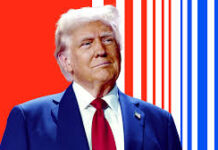Tariffs, as a tool of economic policy, have been a contentious subject throughout history. While they serve specific purposes, such as protecting domestic industries or addressing unfair trade practices, their overall effectiveness in achieving sustained economic prosperity or resolving trade imbalances remains debatable. If tariffs were truly a panacea for these challenges, they would have been universally adopted and maintained as a cornerstone of global economic policy. However, their mixed results and unintended consequences have often led to skepticism among economists and policymakers.
**What Are Tariffs and Their Historical Role?**
Tariffs are taxes imposed on imported goods, often used to protect domestic industries by making foreign products more expensive. Historically, tariffs were a significant source of government revenue. For example, in the United States, tariffs were the primary revenue stream until the introduction of income tax in 1914. However, the post-World War II era marked a shift toward trade liberalization. Countries increasingly embraced free trade agreements under frameworks like the General Agreement on Tariffs and Trade (GATT) and its successor, the World Trade Organization (WTO), recognizing the benefits of reduced trade barriers for economic growth[1][3].
Despite this trend, tariffs have periodically resurfaced as tools for addressing specific economic or political concerns. For instance, the Trump administration’s tariffs on Chinese goods in 2018 aimed to counteract unfair trade practices but also sparked a trade war that led to retaliatory measures[1][6].
### **The Economic Case Against Tariffs**
Economists overwhelmingly agree that free trade fosters economic growth by promoting efficiency and competition. Tariffs disrupt this dynamic by:
– **Raising Prices:** Tariffs increase the cost of imported goods, which often gets passed on to consumers. This reduces purchasing power and limits consumer choice[3][4].
– **Reducing Efficiency:** By shielding domestic industries from foreign competition, tariffs can stifle innovation and lead to inefficiencies. Protected industries may lack incentives to improve productivity or adopt advanced technologies[1][5].
– **Triggering Retaliation:** When one country imposes tariffs, trading partners often respond in kind, escalating trade tensions and harming global economic relations[1][6].
For example, during the U.S.-China trade war, both countries imposed tariffs on each other’s goods, resulting in higher costs for businesses and consumers while failing to resolve underlying trade imbalances[1][6].
**Can Tariffs Ever Be Effective?**
While broad-based tariffs often yield negative outcomes, targeted tariffs can be effective under certain circumstances:
1. **Protecting Strategic Industries:** Tariffs can shield critical sectors like steel or semiconductors from unfair competition caused by foreign subsidies. This approach is particularly relevant for national security concerns[2][4].
2. **Addressing Labor and Environmental Standards:** Differential tariffs can incentivize trading partners to improve labor rights or adopt environmentally sustainable practices[2].
3. **Counteracting Dumping:** Tariffs can prevent foreign producers from selling goods below cost to undercut domestic industries—a practice known as dumping[4].
However, these applications require careful calibration and integration into broader policy frameworks. When used indiscriminately or excessively, tariffs often create more problems than they solve.
**Trade Imbalances: A Persistent Challenge**
One of the primary justifications for tariffs is their potential to address trade imbalances—situations where a country imports more than it exports. However, economists argue that trade imbalances are not inherently harmful and often reflect broader macroeconomic factors like savings rates and investment flows.
For instance:
– The U.S. has maintained a trade deficit for decades despite imposing various tariffs. This deficit is largely driven by high consumer demand for imports and the dollar’s role as a global reserve currency[3].
– Measures like tariffs may temporarily reduce imports but rarely address the structural causes of imbalances[3].
**Why Have Tariffs Not Been Universally Embraced?**
If tariffs were unequivocally effective at fostering prosperity or resolving trade imbalances, they would likely be a staple of global economic policy. However, several factors explain their limited adoption:
1. **Unintended Consequences:** Tariffs often lead to higher costs for consumers and businesses while provoking retaliatory measures from trading partners[1][4].
2. **Globalization:** In an interconnected world economy, supply chains span multiple countries. Tariffs disrupt these networks, making them an ill-suited tool for modern economies[4][5].
3. **Empirical Evidence:** Historical examples suggest that protectionist policies rarely deliver long-term benefits. For instance, import substitution strategies in developing countries during the 20th century often resulted in underdeveloped industries that failed to compete globally once protections were removed[1][5].
**Conclusion**
While tariffs can serve specific purposes—such as protecting strategic industries or addressing unfair practices—they are not a one-size-fits-all solution for achieving economic prosperity or resolving trade imbalances. Their mixed track record highlights the complexities of global trade dynamics and underscores the importance of nuanced policymaking.
The enduring preference for free trade among economists and policymakers reflects its proven ability to drive growth, foster innovation, and enhance consumer welfare. If tariffs were truly effective in delivering widespread economic benefits without significant downsides, they would have been universally embraced long ago. Instead, their selective application underscores their limitations as a policy tool in an increasingly interconnected world economy.
By George Prince
Citations:
[1] https://www.brookings.edu/
[2] https://www.epi.org/
[3] https://taxfoundation.org/
[4] https://www.weforum.org/
[5] https://www.imf.org/en/Blogs/
[6] https://taxfoundation.org/
[7] https://www.brookings.edu/
[8] https://news.gsu.edu/2024/10/












